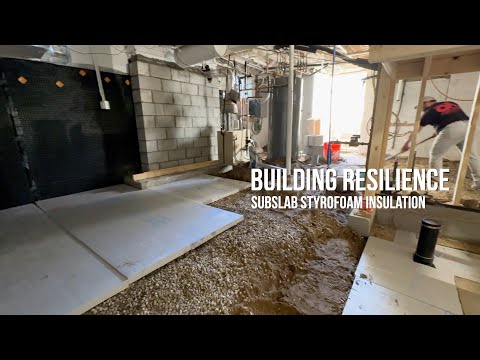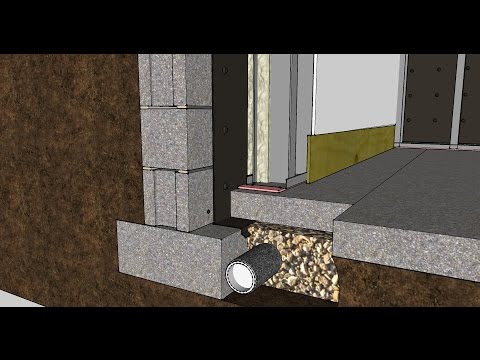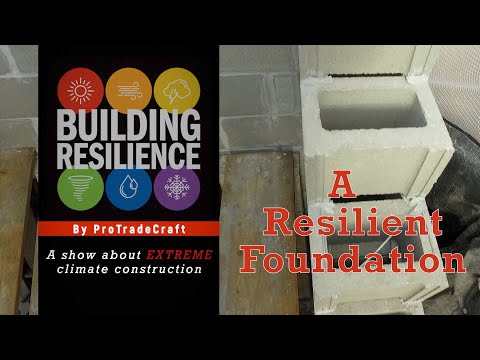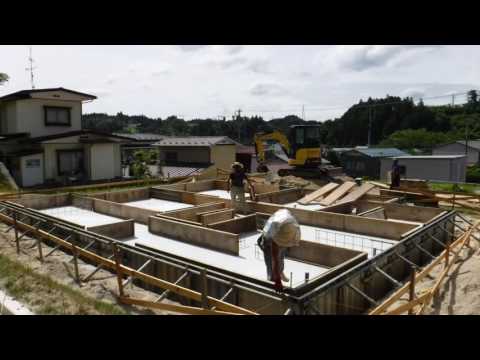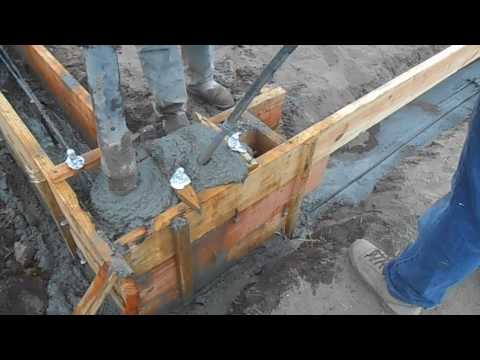Here’s something you don’t see every day: An interior footing for an old foundation. But how did we get here? 100 years ago, someone build a house using a poured concrete foundation, but they did NOT put a footing under the walls. It has worked fine in these sandy soils, but this job calls for digging down to extend the headroom in the basement.
Theoretically we can dig at a 45-degree angle away from the bottom of the foundation wall without disrupting the bearing capacity of the soil. Realistically, with sandy soil, it is difficult to dig at a 45 degree angle, so the crew works fast. They also dig an interior trench for drain tile.
A dimple sheet covers the foundation wall and directs any water into the drainage trench. Some Styrofoam insulation is added under where the interior footing curb will be, and some gravity-defying rebar is placed into place. And the concrete curb is poured. In the real world, you need to build a form,. And then strip it after the pour.
Now we can continue the Styrofoam insulation under the forthcoming slab. The seams are taped with construction tape, which will seal against soil gasses and allow the slab to cure slower. Before we pour that slab, though, let's put down some hydronic tubing for in-floor heat. The tubing sits on the insulation, placing the thermal mass above the heat source.
The slab is poured between the curbs, which keeps them in place structurally. And keeps the house from falling down.
